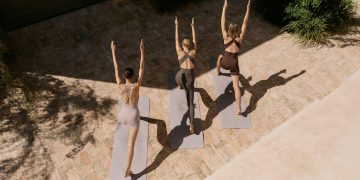The Emergence of NSDR in Corporate Leadership
In boardrooms across Silicon Valley and beyond, a new acronym is circulating with increasing frequency: NSDR, or Non-Sleep Deep Rest. Once a fringe neuroscience concept, NSDR is rapidly gaining traction among high-performance leaders, particularly CEOs seeking a competitive edge in clarity, resilience, and cognitive endurance. Unlike naps or meditation, NSDR refers to a state of conscious, low-frequency brain activity that allows the nervous system to reset without slipping into full sleep. Its advocates claim that just 10–20 minutes of NSDR can yield the rejuvenating effects of hours of traditional rest, making it particularly attractive in fast-paced corporate environments where decision fatigue and cognitive overload are persistent threats.
Understanding the Neuroscience of High-Performance Recovery
NSDR is based on the principle that the brain, like a muscle, needs regular recovery intervals to perform at optimal levels. Research from Stanford neuroscientist Dr. Andrew Huberman has helped popularize NSDR as a tool to access theta and alpha brainwave states without falling asleep, enabling restorative benefits similar to deep meditation or the early phases of sleep. Functional MRI studies suggest that during NSDR, the brain activates default mode network regions associated with memory consolidation, emotional processing, and creative ideation. For CEOs juggling multiple time zones, crises, and strategy pivots, this state offers a non-pharmacological method for mental reset, often in under 15 minutes.
Why CEOs Are Turning to Rest Pods Instead of Coffee Breaks
The traditional CEO recharge involved caffeine, power naps, or short walks. Now, high-end offices are installing NSDR pods—compact, soundproof, reclining enclosures optimized for deep rest with guided audio tracks and smart lighting. These pods are designed to block out distractions and entrain the brain into low arousal states using ambient acoustics and adjustable temperature settings. Companies like Meta, Google, and Salesforce have begun piloting NSDR pod zones as part of broader workplace wellness initiatives. Some CEOs report scheduling NSDR breaks as intentionally as board meetings—citing clearer thinking, better conflict resolution, and more stable emotional regulation as direct outcomes.
Office Installation: What Makes a Space NSDR-Compatible
Designing an effective NSDR space requires more than just a comfortable chair. Sound insulation, low ambient light, ergonomic recline angles, and temperature neutrality all play vital roles in nudging the brain toward the desired neural frequencies. While commercial pods like the Somadome or WavePod come pre-equipped with biofeedback systems and app integrations, some companies are converting existing spaces like lactation rooms or nap lounges into NSDR zones. The key is consistency and sensory predictability: a routine space with familiar cues helps condition the brain to enter restorative states more easily over time. CEOs who use NSDR regularly often report that simply entering their pod triggers a Pavlovian shift into calm alertness.
DIY NSDR Setups for Resourceful Leaders
Not every organization can afford state-of-the-art rest pods, but NSDR is accessible without high-end tech. A quiet office, noise-canceling headphones, and a curated NSDR track—many of which are available for free online—can suffice. The technique often involves lying flat or reclining, closing the eyes, and following a voice-guided body scan or breath count designed to sustain wakefulness while inducing calm. CEOs who travel frequently have adapted NSDR rituals for airplanes, cars, and even standing meditation in greenrooms. The essential ingredients are reduced sensory input, intention, and stillness. With practice, some individuals can enter an NSDR state in under a minute, using it as a cognitive “quick save” between meetings.
From Power Naps to Neural Reboots: NSDR vs Traditional Rest
Traditional rest strategies like naps or meditation serve important functions, but NSDR offers a distinct advantage: it delivers restorative benefits without entering full sleep cycles or requiring a meditative mindset. Unlike naps, NSDR doesn’t risk post-rest grogginess, known as sleep inertia. Unlike meditation, it doesn’t demand years of practice or mental discipline. This makes it especially appealing for high-functioning individuals who struggle with switching off. NSDR bridges the gap between physiological recharge and performance sustainability, allowing CEOs to manage stress and enhance neuroplasticity in a way that aligns with their high-output schedules.

Case Studies: Leadership Performance Transformed
Several CEOs have gone public with their reliance on NSDR. Tech leaders credit the practice with helping them make better decisions under pressure, retain complex information more effectively, and remain emotionally grounded during organizational change. A fintech founder in New York reportedly avoided burnout by integrating three short NSDR sessions into her day, especially before high-stakes investor meetings. In a 2024 survey by the Executive Wellness Institute, 61% of startup founders who used NSDR regularly reported improved sleep quality, even though NSDR itself is not sleep. For many, this practice functions as a strategic cognitive hygiene ritual—one that builds long-term resilience and short-term clarity.
The Mental Health Angle: NSDR for Anxiety and Burnout Prevention
The mental health benefits of NSDR may be its most powerful advantage. By guiding the nervous system into a parasympathetic state—where the body shifts from fight-or-flight to rest-and-digest—NSDR lowers cortisol, slows heart rate, and improves heart rate variability. These are critical metrics in burnout prevention and stress resilience. CEOs who have adopted NSDR as a core recovery tool report reduced anxiety, fewer depressive symptoms, and increased patience in high-pressure situations. Some executive coaches now teach NSDR alongside strategic planning and time management, arguing that a calm brain is a more effective business tool than a caffeinated one.
Privacy, Culture, and the Optics of Rest in Leadership
One barrier to wider NSDR adoption is perception. For generations, Western business culture has equated rest with weakness or laziness. Even today, CEOs may worry about the optics of “lying down on the job,” particularly in competitive or traditional sectors. But as mental health awareness becomes more mainstream, the narrative is shifting. High performers increasingly view rest as a form of discipline, not indulgence. Leaders who model healthy recovery practices help destigmatize self-care for their teams. Moreover, many organizations are realizing that when a CEO takes NSDR seriously, it sends a signal that sustainable performance—not just constant motion—is a leadership value.
Toward a Future of Cognitive Sustainability in Business
As cognitive demands on executives continue to rise, so too does the need for sustainable performance models. NSDR offers a science-backed, efficient, and culturally resonant method for keeping the brain at peak function without pharmaceuticals or elaborate time investments. In the future, NSDR pods may become as common in corner offices as espresso machines. Companies will likely build NSDR practice into onboarding, performance reviews, and wellness programming. Some futurists even predict integration with biometric data—where wearable tech detects stress signals and triggers personalized NSDR interventions in real-time. In this vision, recovery becomes not a side note but a strategic asset.
Conclusion: Rest Is the New Superpower
For CEOs navigating complexity, ambiguity, and rapid decision-making, Non-Sleep Deep Rest may be the cognitive upgrade they didn’t know they needed. In a world that rewards hustle and hyper-productivity, the quiet discipline of NSDR offers a radical reframe: that true performance comes not just from doing more, but from resting smarter. Whether in a high-tech pod or a quiet corner of an office, the adoption of NSDR reflects a deeper shift in business leadership—from burnout to balance, from fatigue to flow. And as the science continues to unfold, one thing becomes clear: in the age of information overload, stillness is not the enemy—it’s the edge.






























